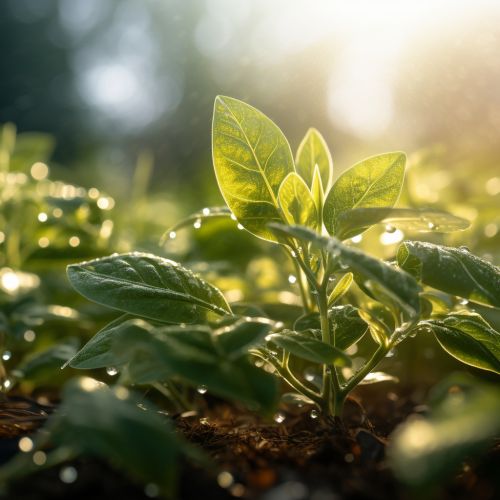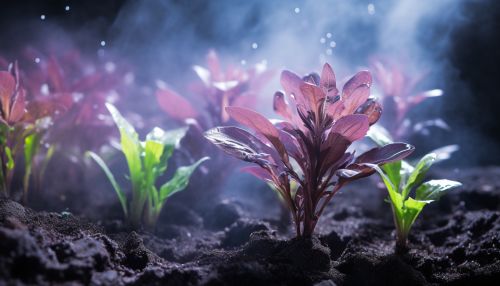The Biological Mechanisms of Plant Volatile Organic Compound Emission
Introduction
Plants emit a diverse array of volatile organic compounds (VOCs), which play critical roles in their interactions with the environment and other organisms. These compounds are involved in a wide range of biological processes, including defense against herbivores and pathogens, attraction of pollinators, and communication with other plants. This article will delve into the biological mechanisms that govern the emission of VOCs by plants, exploring the biosynthetic pathways involved, the factors that regulate VOC production, and the ecological implications of these emissions.


Biosynthesis of Plant VOCs
The biosynthesis of plant VOCs involves multiple metabolic pathways, with the two primary ones being the terpenoid and phenylpropanoid pathways. These pathways generate a wide variety of VOCs, including monoterpenes, sesquiterpenes, and phenylpropanoids, which are then modified by various enzymes to produce the diverse array of VOCs emitted by plants.
Terpenoid Pathway
The terpenoid pathway is responsible for the production of a wide range of VOCs, including monoterpenes, sesquiterpenes, and diterpenes. This pathway begins with the condensation of isopentenyl diphosphate (IPP) and dimethylallyl diphosphate (DMAPP), which are produced via the MEP pathway in the plastids and the mevalonate (MVA) pathway in the cytosol. The resulting geranyl diphosphate (GPP), farnesyl diphosphate (FPP), and geranylgeranyl diphosphate (GGPP) are then converted into various terpenoids by terpene synthases.


Phenylpropanoid Pathway
The phenylpropanoid pathway leads to the production of a variety of VOCs, including phenylpropanoids, benzenoids, and flavonoids. This pathway begins with the amino acid phenylalanine, which is deaminated by the enzyme phenylalanine ammonia-lyase (PAL) to produce cinnamic acid. This compound is then converted into various phenylpropanoids and benzenoids through a series of enzymatic reactions.


Regulation of VOC Emission
The emission of VOCs by plants is regulated by a variety of factors, including developmental stage, environmental conditions, and biotic interactions. These factors can influence both the quantity and composition of the VOCs emitted.
Developmental Regulation
The emission of VOCs is often associated with specific developmental stages. For example, many plants emit a burst of VOCs during flowering, which serves to attract pollinators. The biosynthesis and emission of these VOCs are regulated by a complex network of plant hormones and transcription factors.
Environmental Regulation
Environmental conditions, such as light, temperature, and water availability, can also influence the emission of VOCs. For example, light and temperature can affect the activity of the enzymes involved in VOC biosynthesis, while water stress can induce the production of certain VOCs that help protect the plant from drought.
Biotic Interactions
Biotic interactions, such as herbivory and pathogen attack, can also trigger the emission of VOCs. These VOCs can serve as direct defenses against the attackers, or as indirect defenses by attracting natural enemies of the attackers.


Ecological Implications of VOC Emission
The emission of VOCs by plants has significant ecological implications. These compounds can influence plant-plant, plant-animal, and plant-microbe interactions, and can also affect atmospheric chemistry.
Plant-Plant Interactions
VOCs can mediate plant-plant interactions by acting as allelochemicals, which can inhibit the growth and development of neighboring plants. They can also serve as signals that induce defense responses in neighboring plants when a plant is attacked by herbivores or pathogens.
Plant-Animal Interactions
VOCs play a crucial role in plant-animal interactions. They can attract pollinators, deter herbivores, and attract natural enemies of herbivores. Some VOCs can also act as repellents or toxins to protect the plant from herbivores.
Plant-Microbe Interactions
VOCs can also influence plant-microbe interactions. Some VOCs have antimicrobial properties and can protect the plant from pathogenic microbes. Others can attract beneficial microbes that can help the plant acquire nutrients or defend against pathogens.
Atmospheric Implications
Plant VOCs can also have significant effects on atmospheric chemistry. They can react with other atmospheric constituents to form secondary organic aerosols, which can influence cloud formation and climate.


